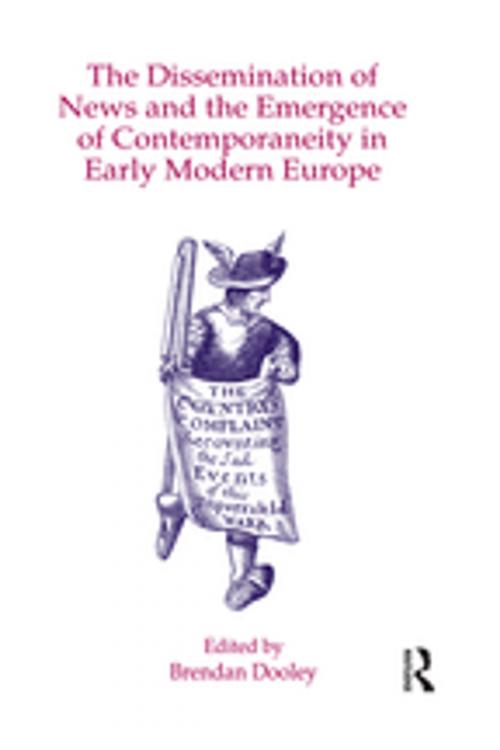The Dissemination of News and the Emergence of Contemporaneity in Early Modern Europe
Nonfiction, History| Author: | ISBN: | 9781351891462 | |
| Publisher: | Taylor and Francis | Publication: | December 5, 2016 |
| Imprint: | Routledge | Language: | English |
| Author: | |
| ISBN: | 9781351891462 |
| Publisher: | Taylor and Francis |
| Publication: | December 5, 2016 |
| Imprint: | Routledge |
| Language: | English |
Modern communications allow the instant dissemination of information and images, creating a sensation of virtual presence at events that occur far away. This sensation gives meaning to the notions of 'real time' and of a 'present' that is shared within and among societies”in other words, a sensation of contemporaneity. But how were time and space conceived before modernity? When did this begin to change in Europe? To help answer such questions, this volume looks at the exchange of information and the development of communications networks at the dawn of journalism, when widespread public and private networks first emerged for the transmission of political news. What happened in Prague quickly reached Venice, and what happened in Naples was soon the talk of Hamburg. Gradually, enough became known about daily affairs around Europe for people to begin to think in terms of a 'shared present'. An analysis of contemporaneity adds a new dimension to the study of the origins of news and media history, as well as to the origins of a European identity. For whilst our understanding of the circulation of manuscript newsletters and printed reports has increased in recent years, much less is known about the impact of this burgeoning journalism on a pan-European scale. Each essay in this volume explores the ways in which this international impact helped foster a developing sense of contemporaneity that encompassed not just single countries, but Europe as a whole. Taken together the collection offers the first panoramic view of the way stories were born, grew and matured during their transmission from source to source, from country to country. The results published here suggest that a continent-wide network, including manuscript and print, for the transmission of stories from place to place, existed and was effective.
Modern communications allow the instant dissemination of information and images, creating a sensation of virtual presence at events that occur far away. This sensation gives meaning to the notions of 'real time' and of a 'present' that is shared within and among societies”in other words, a sensation of contemporaneity. But how were time and space conceived before modernity? When did this begin to change in Europe? To help answer such questions, this volume looks at the exchange of information and the development of communications networks at the dawn of journalism, when widespread public and private networks first emerged for the transmission of political news. What happened in Prague quickly reached Venice, and what happened in Naples was soon the talk of Hamburg. Gradually, enough became known about daily affairs around Europe for people to begin to think in terms of a 'shared present'. An analysis of contemporaneity adds a new dimension to the study of the origins of news and media history, as well as to the origins of a European identity. For whilst our understanding of the circulation of manuscript newsletters and printed reports has increased in recent years, much less is known about the impact of this burgeoning journalism on a pan-European scale. Each essay in this volume explores the ways in which this international impact helped foster a developing sense of contemporaneity that encompassed not just single countries, but Europe as a whole. Taken together the collection offers the first panoramic view of the way stories were born, grew and matured during their transmission from source to source, from country to country. The results published here suggest that a continent-wide network, including manuscript and print, for the transmission of stories from place to place, existed and was effective.















